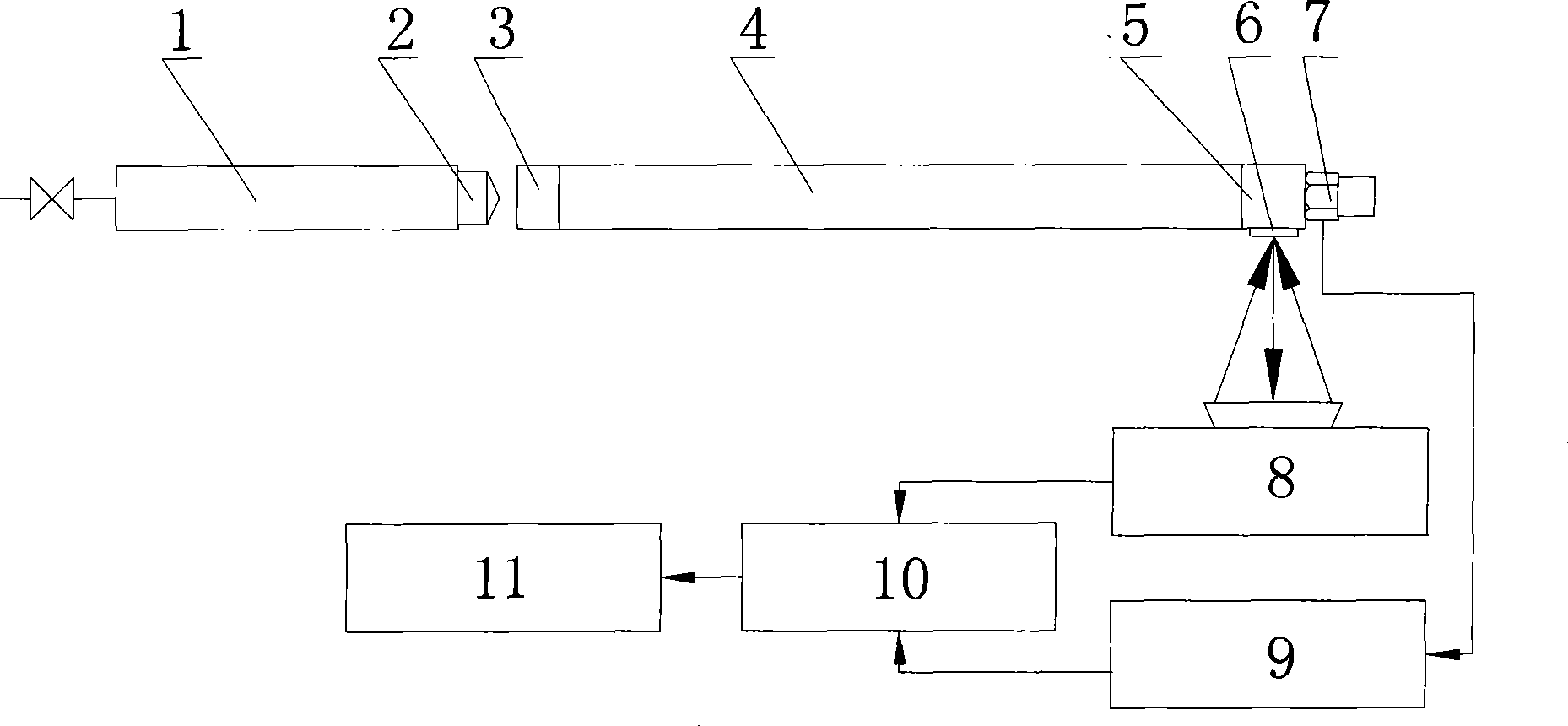High-impact acceleration sensor dynamic characteristic tracing calibrating method
A technology of acceleration sensor and dynamic characteristics, which is used in the testing/calibration of speed/acceleration/shock measurement equipment, speed/acceleration/shock measurement, instruments, etc.
- Summary
- Abstract
- Description
- Claims
- Application Information
AI Technical Summary
Problems solved by technology
Method used
Image
Examples
Embodiment 1
[0035] Embodiment 1. Traceable Calibration Method for Dynamic Characteristics of High Impact Acceleration Sensor
[0036] The traceability calibration method of the dynamic characteristics of the high shock acceleration sensor in this example is based on the traceability calibration of the high shock acceleration sensor being calibrated under the wide pulse condition (the wide pulse condition is that the pulse width is greater than 50μs), and then adopts the narrow pulse ( The narrow pulse condition is that the pulse width is less than 10μs) to excite the high-shock acceleration sensor, and the frequency response characteristics of the high-shock acceleration sensor are measured by testing or measuring instruments, so as to realize the traceability calibration of its dynamic characteristics. The method for using the wide pulse to excite the high impact acceleration sensor is: the minimum width t of the excitation wide pulse required for traceability calibration of the high impa...
Embodiment 2
[0046] Embodiment 2. Traceable Calibration Method for Dynamic Characteristics of High Impact Acceleration Sensor
[0047] The traceability calibration method of the dynamic characteristics of the high shock acceleration sensor in this example differs from the traceability calibration method of the dynamic characteristics of the high shock acceleration sensor in Embodiment 1 in that: the natural frequency f of the calibrated high shock acceleration sensor given in this embodiment is 180kHz, For example, the 8309 sensor of Danish B&K company, the calibration method and process are the same as those described in the first embodiment. The traceability calibration method of the dynamic characteristics of the high impact acceleration sensor in this example is the same as that described in the first embodiment, and will not be repeated.
Embodiment 3
[0048] Embodiment 3. Traceable Calibration Method for Dynamic Characteristics of High Impact Acceleration Sensor
[0049] The traceable calibration method of the dynamic characteristics of the high impact acceleration sensor in this example differs from the traceable calibration method of the dynamic characteristics of the high impact acceleration sensor in Embodiment 1 and Embodiment 2 in the following points: 1. Establish the calibrated high impact according to formula (1) A wide pulse traceability calibration system or device for an acceleration sensor, which uses a Hopkinson rod 4 with a diameter of Φ25mm and a length of 1.6m to generate an amplitude of (0.5~1.0)×10 5 g, the excitation pulse with a pulse width of 100-250 μs. 2. The present embodiment provides that the natural frequency f of the calibrated high-shock sensor is 120kHz, such as the 350A96 sensor of the U.S. PCB company, the rest of the traceability calibration method of the dynamic characteristics of the high...
PUM
 Login to View More
Login to View More Abstract
Description
Claims
Application Information
 Login to View More
Login to View More - R&D
- Intellectual Property
- Life Sciences
- Materials
- Tech Scout
- Unparalleled Data Quality
- Higher Quality Content
- 60% Fewer Hallucinations
Browse by: Latest US Patents, China's latest patents, Technical Efficacy Thesaurus, Application Domain, Technology Topic, Popular Technical Reports.
© 2025 PatSnap. All rights reserved.Legal|Privacy policy|Modern Slavery Act Transparency Statement|Sitemap|About US| Contact US: help@patsnap.com



